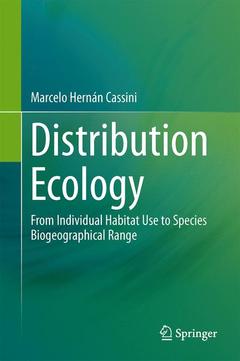Description
Distribution Ecology, 2013
From Individual Habitat Use to Species Biogeographical Range
Author: Cassini Marcelo Hernán
Language: English
Approximative price 189.89 €
In Print (Delivery period: 15 days).
Add to cart217 p. · 15.5x23.5 cm · Hardback
Description
/li>Contents
/li>Comment
/li>
Part I: Concepts and definitions.- 1. Concepts and DefinitionsPart II: Levels within species.- 2. Distribution of individuals.- 3. Distribution of aggregations.- 4 Distribution of societies.- 5. Distribution of subpopulations .- 6 Distribution of populations.- 7. Distribution of species.- Part III: Levels outside species.- 8. Distribution of species assemblages.- Part IV: Applications.- 10. Distribution ecology in conservation biology.- 11. Distribution ecology in animal production.- Part V: Conclusions and prospects.- 12. Conclusions
This book brings together a set of approaches to the study of individual-species ecology based on the analysis of spatial variations of abundance
Combines theoretical issues with technical developments such as mapping distributions
Addresses the limitations that still exist in understanding the relationships between scales and the importance of distribution ecology in determining key factors that affect species conservation status
Includes supplementary material: sn.pub/extras
These books may interest you

Molecular Biology 210.99 €



